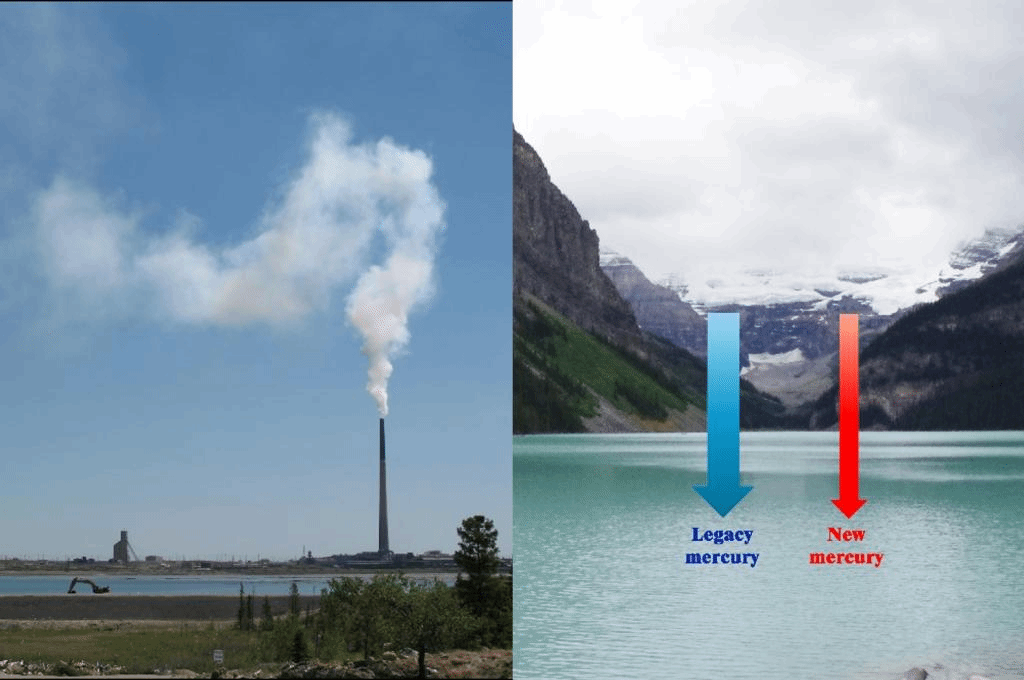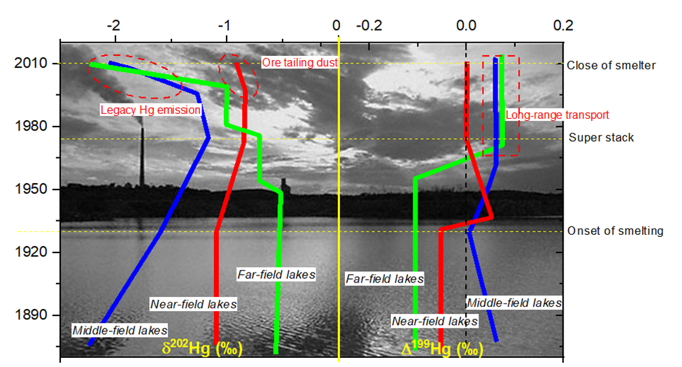- We're still paying for mercury contamination decades ago
Nature archives record atmospheric mercury (Hg) depositions from directly emitted Hg and reemitted legacy Hg. Tracing the legacy versus newly deposited Hg is still, however, challenging. Here, we measured Hg isotope compositions in three dated sediment cores at different distances from the Flin Flon smelter (Figure 1), the largest Canadian Hg sources to the atmosphere during the 1930s-2000s. During the smelter’s operative period, Hg isotope compositions showed limited variations in the near-field lake (<10 km) sediments but were rather variable in middle- (20-75 km) and far-field lake (~800 km) sediments (Figure 2). Only the post-2000 sediments in middle/far-field lakes showed significantly negative Hg isotope shifts, while sediments from the 1970s-1990s had Hg isotope values resembling those of near-field lake post-1930 sediments. We suggest that the smelter’s peak Hg emissions during the 1970s-1990s, which coincided with the deployment of a super stack in the mid-1970s, largely increased the long-range dispersion of smelter plumes. For the top post-2000 sediments, the fugitive dust from ore tailings and terrestrial legacy Hg reemissions dominated Hg deposition in near-field lakes and middle/far-field lakes, respectively.
Our case study demonstrates that Hg isotopes have the potential to distinguish direct and legacy Hg deposition in lake sediments. This has important implications for current and future Hg source tracing in environmental reservoirs. With the enforcement of the legally-binding Minamata Convention on Mercury treaty, anthropogenic Hg releases are expected to decline in the following decades. However, the response of environmental reservoirs might be obscured by the remobilization of legacy Hg, particularly at sites that were heavily contaminated by Hg. Significant amounts of Hg might now also be remobilized from other historical Hg contamination sites to the surrounding ecosystems, dwarfing the contribution of newly deposited Hg. We suggest that more Hg isotope studies are to be applied in the future to evaluate the relative contribution of legacy Hg versus newly deposited Hg. Such studies could reduce the analytical noise in environmental data and provide a tool to quantify the efficacy of new policies and thereby support the effectiveness of the Minamata Convention.

Figure 1. Flin Flon metallurgical smelter, the largest atmospheric Hg point source in Canada between the 1930s and 2010 (when it closed)(Left, provided by Holger Hintelmann) and a Canadian lake illustrating relative fluxes of legacy mercury and new mercury deposition (Right, provide by Ruoyu Sun).

Figure 2. Mercury isotope signatures of lake sediments located at varying distances from the Flin Flon (the significantly negative δ202Hg shifts around 2000 imply legacy mercury releases).
Article informaiton:
R. Sun*, H. Hintelmann, J. A. Wiklund, M. S. Evans, D. Muir and J. L. Kirk. "Mercury Isotope Variations in Lake Sediment Cores in Response to Direct Mercury Emissions from Non-Ferrous Metal Smelters and Legacy Mercury Remobilization." Environmental Science & Technology.
https://doi.org/10.1021/acs.est.2c02692